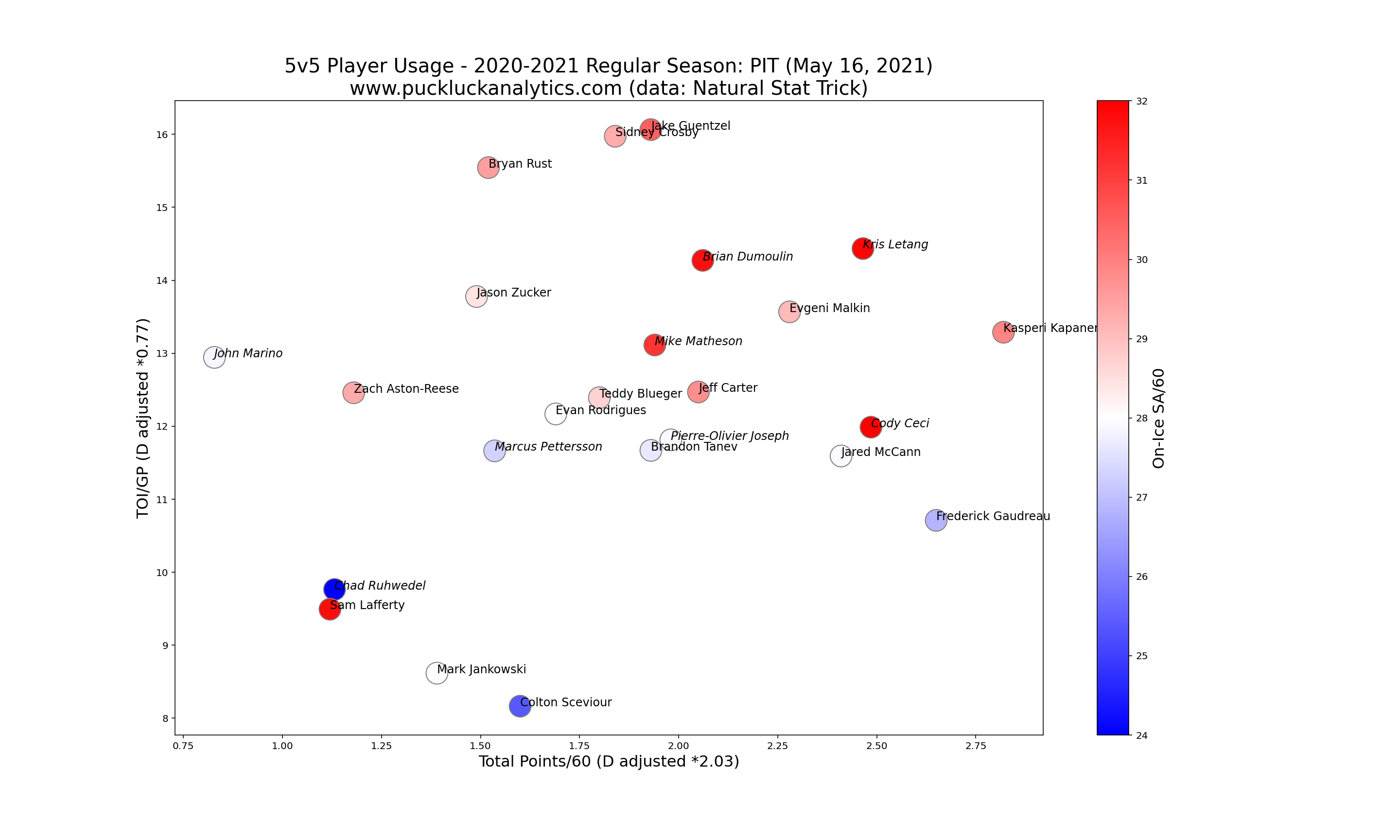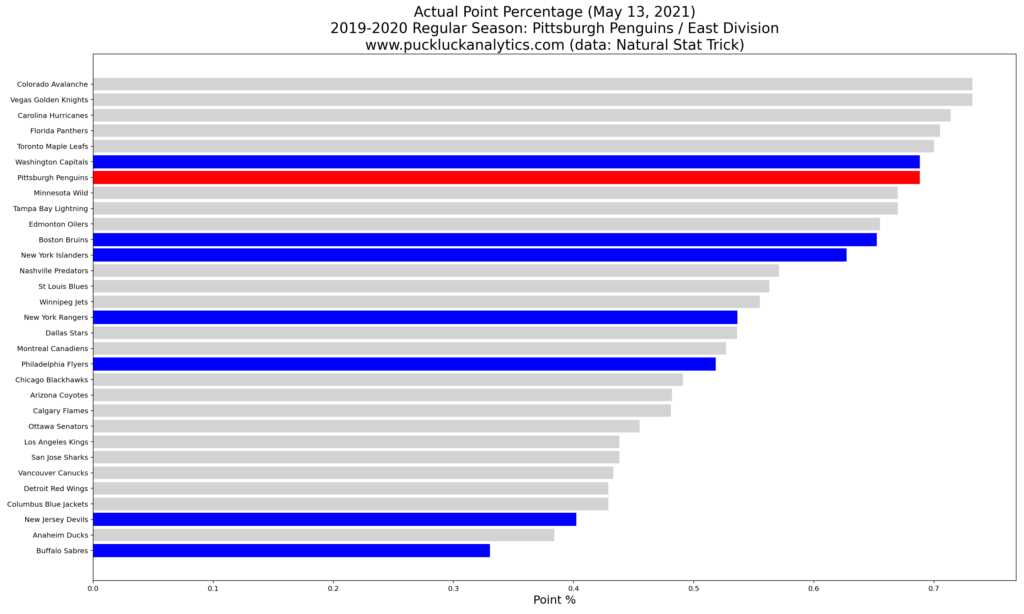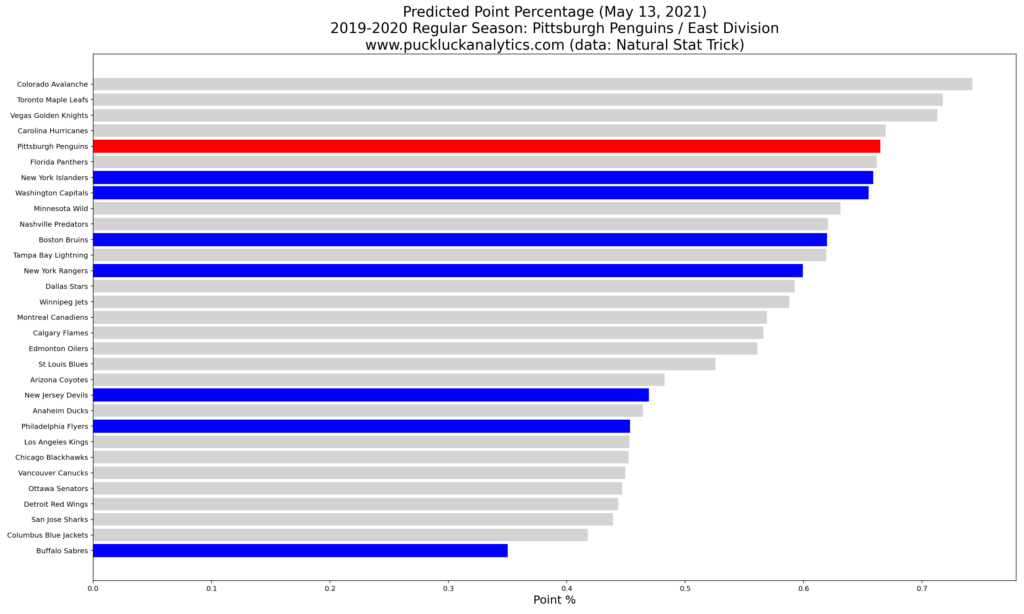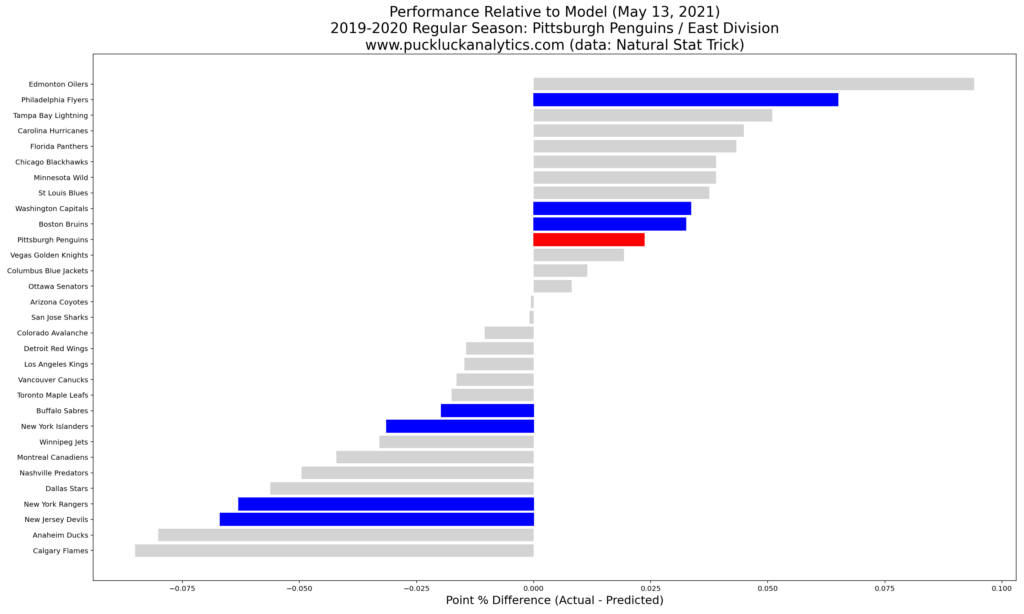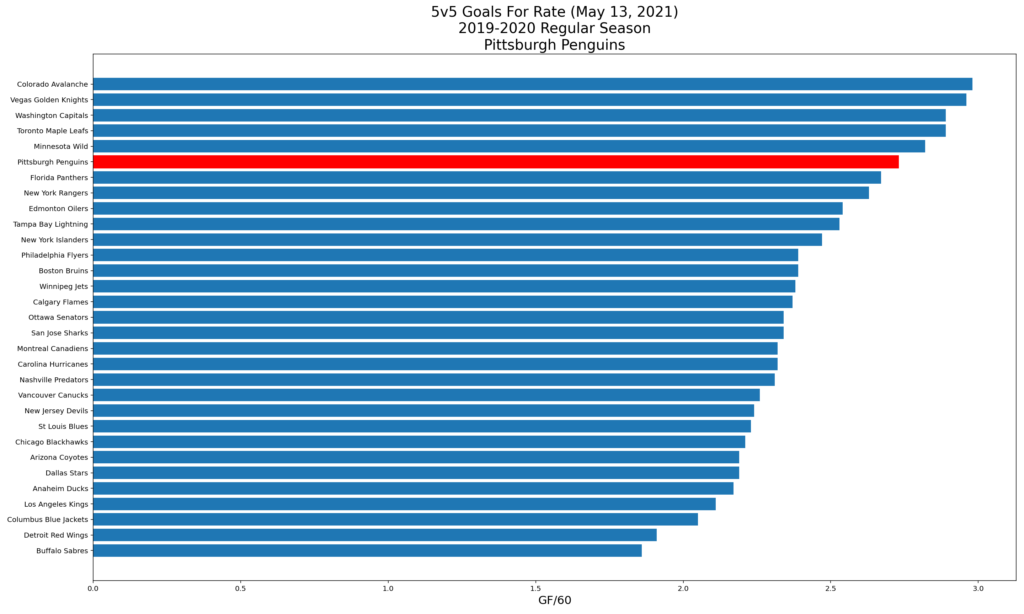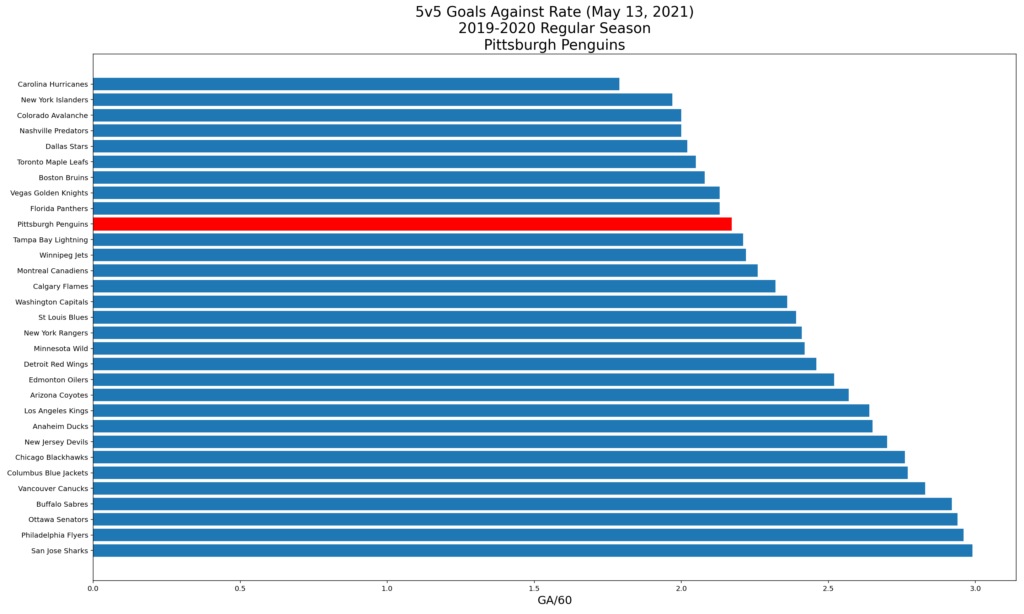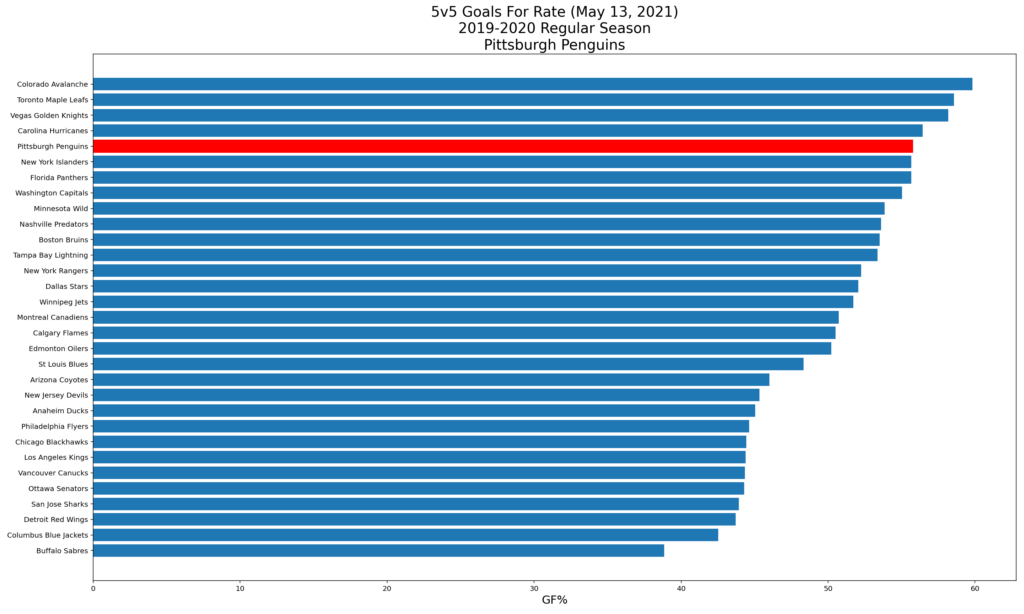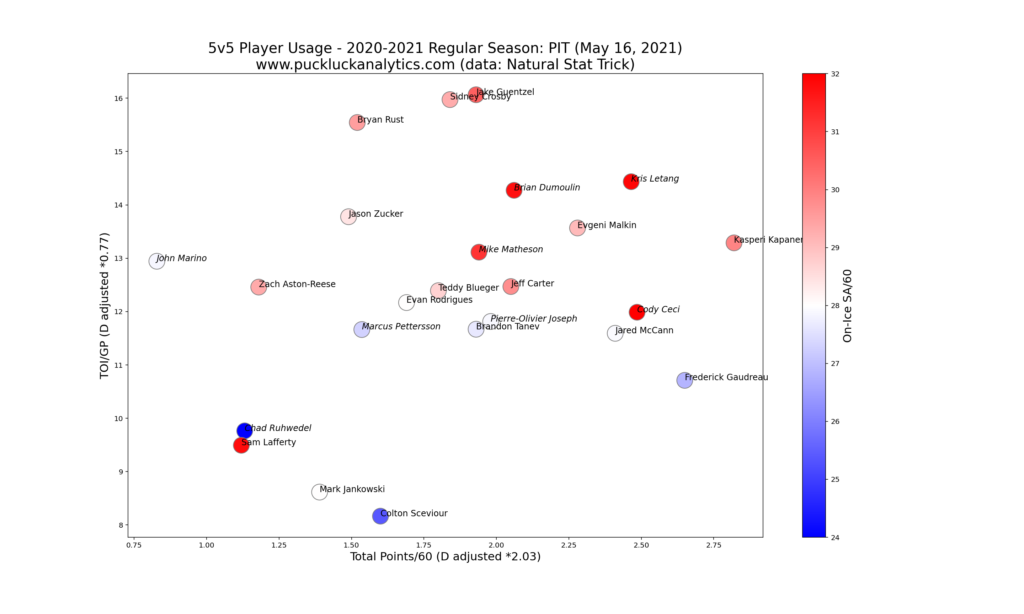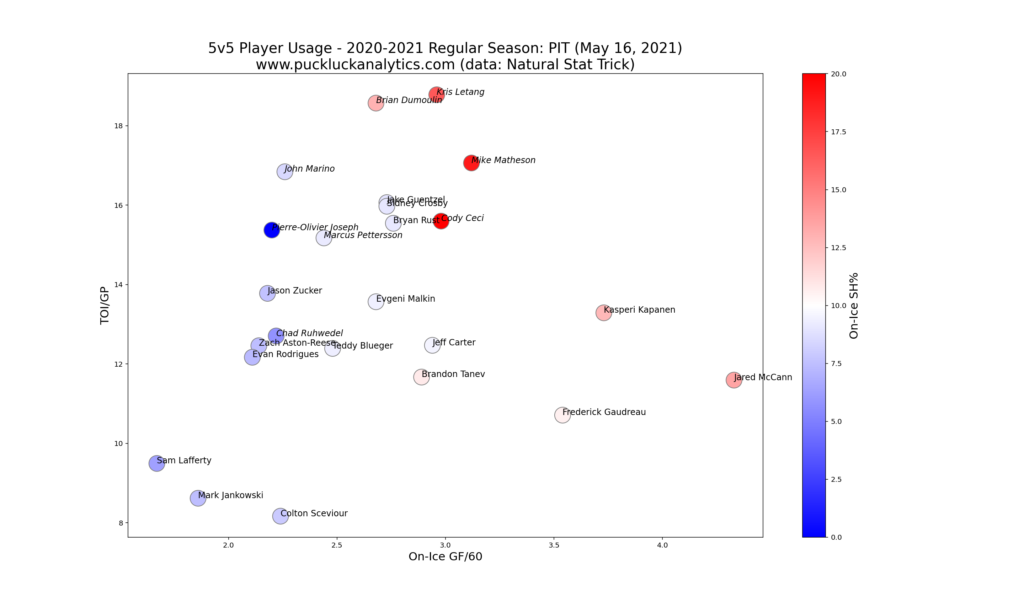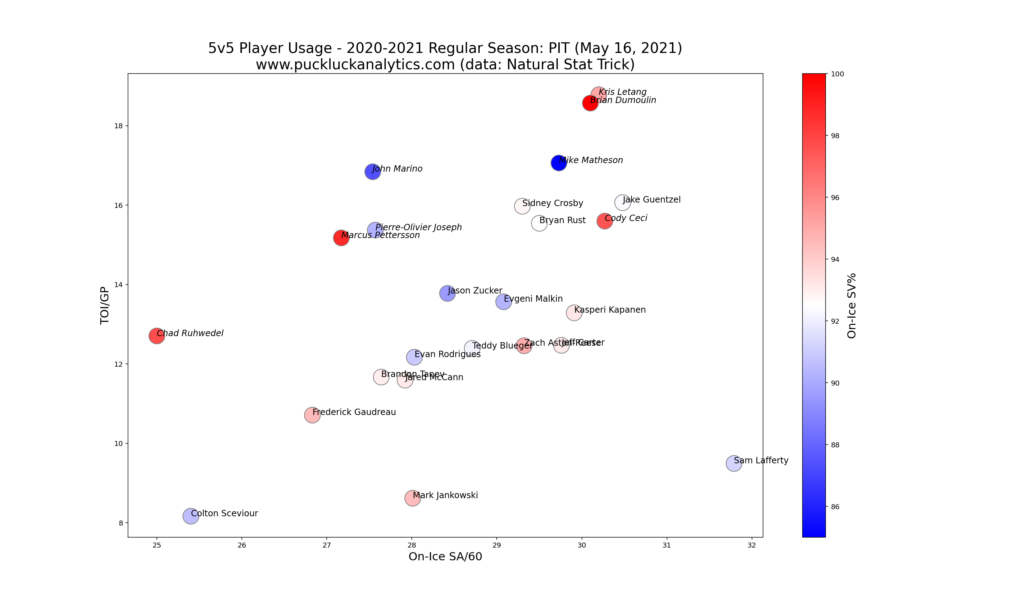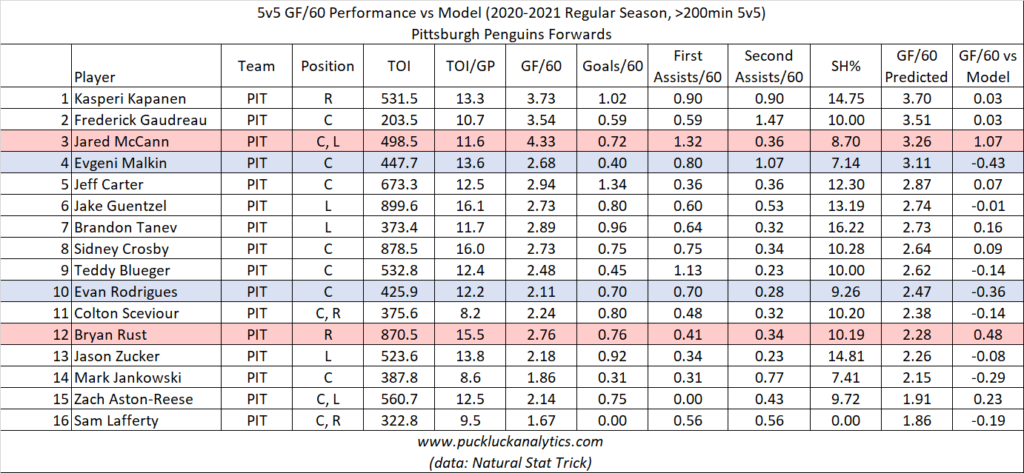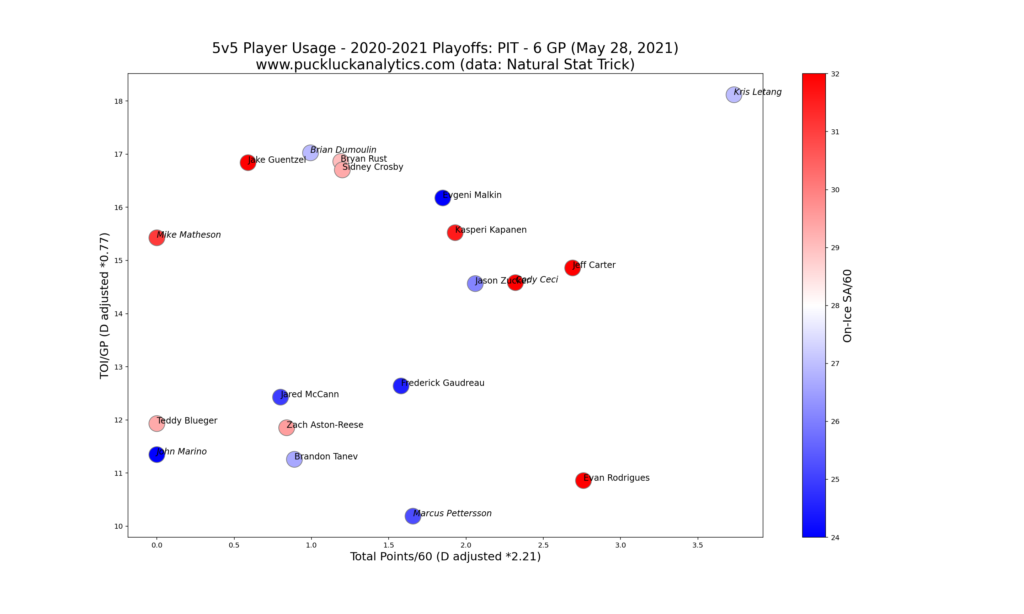The Penguins were slow out of the gate this season, but turned things around mid-season after bringing Brian Burke and Ron Hextall into the front office. The Penguins looked even more dangerous after the trade deadline acquisition of Jeff Carter but were dispatched from the first round in 6 games by the Islanders. If you haven’t already, I encourage giving this post a read for additional detail on what we’ll be looking for in our review. Let’s dig into the Penguins season.
Overall Performance (Regular Season)
First, we’ll look at overall team performance and compare it to our points predictor model output. The model uses only 5v5 input data so it gives us a sense of how much the Penguins’ results were supported by strong 5v5 play.
The Penguins finished the regular season in a dead heat with the Washington Capitals and took the top seed in the East Division based on tie-breakers. While they outperformed the model slightly, the model put them in sole possession of first in the East due to the Caps outperforming the model by a larger margin. All-in-all, it looks like the Penguins 5v5 play is providing a solid foundation for their results.
Let’s take a look at the 5v5 goal rates feeding the points predictor model.
We see the Penguins were strong on both sides of the puck, leading to a 5v5 goal for percentage that was in the top 5 in the NHL. At this level, it looks like the Pens have a strong 5v5 foundation behind their results.
Player Performance (Regular Season)
We’ll use a 5v5 player usage chart to start analyzing individual player performance. Defensemen’s stats in this first chart have been factored for comparison with forwards and the result is a visual depth chart along the diagonal. Top players are at the top right.
We do generally see the diagonal distribution we are looking for, however there are a few players that stand out away from the diagonal on both sides. Toward the top, we see Sidney Crosby, Jake Guentzel, Bryan Rust and John Marino. Their position well above the diagonal line indicates that these players may have been over-utilized. On the bottom side of the diagonal line, we see Kasperi Kapanen, Jared McCann, Frederick Gaudreau and Cody Ceci. These four players may have been under-utilized. We’ll keep an eye out for these players as we go through the review to look for verification or other explanations for their ice-time.
Next, we’ll look at each player’s relative contribution to team offense. By plotting on-ice GF/60 vs TOI/GP, we get a plot that visualizes offensive impact. Players further toward the top right had larger contributions to team GF/60.
In this plot, we see Kapanen, McCann and Gaudreau stand out again at the right side of the chart. It certainly looks as though providing these players with larger roles at 5v5 would increase their impact on team offense.
Next, we’ll look at a similar plot to visualize contributions to team defense. This time we’ll look at on-ice SA/60 vs TOI/GP and we better contributions are found further left and down.
We see an interesting diagonal distribution on this chart, which was not necessarily expected. The Pens’ depth players seem to have consistently provided stronger defensive impacts than their more offensive stars. While it wasn’t necessarily expected, this appears to be a very well managed roster. It is, of course, ideal for depth players who provide less offensive impact to have strong defensive impacts, thus providing solid overall goal differential impacts throughout the lineup.
We can also get a sense for which players carried their line mates using our on-ice GF/60 models. Looking at the difference between the model prediction and actual on-ice GF/60 helps identify this. Negative variances suggest a player carried their line mates and we are looking for variances greater than about 0.3.
Starting with forwards, Evgeni Malkin and Evan Rodrigues stand our with negative variances. This suggests that they carried their line mates and could take on larger roles or play with stronger players. On the other hand, Jared McCann and Bryan Rust’s results suggest they were carried by their line mates. We noted both players in the initial usage chart, although for different reasons. Rust appeared to be over-utilized and this result lends that theory further credit. The Pens should look to reduce his role for increased impact. McCann appeared to be under-utilized in the initial chart and this result flies in the face of that theory. It may be that his offensive numbers were inflated and he would actually be better suited to a lesser role.
Looking at the Pens’ defensemen, there aren’t many large variances that stand out. Mike Matheson had a sizeable variance suggesting he was carried offensively by his line mates. John Marino did as well, but the magnitude was near our cut-off for significance. However, with Marino initially looking over-utilized, we may have some further evidence to back that up.
The Penguins goaltending was quite stable in the regular season. With Casey DeSmith and Tristan Jarry splitting duties in the crease, both put up respectable numbers at 5v5 and helped the Pens put together solid team GA/60 numbers.
Playoff Performance
While a six game sample is much too small to base any long term predictions on, reviewing the Pens performance against the Isles can give us some insight into how the Pens fell from the playoff picture.
The 5v5 usage chart looks relatively similar to the Pens’ regular season results, indicating that their overall play was generally consistent with their play during the regular season. Crosby, Rust, and Guentzel could have produced a bit more, but the performance from the depth players looks like it was strong enough to be competitive. The Pens undoing in this series was their goaltending. Tristan Jarry put up a 0.890 save percentage at 5v5 over 6 games, much lower than his regular season numbers.
Looking Ahead
The Penguins have over $80M committed to the 2021-2022 salary cap as they head to the offseason, leaving them essentially no cap room to maneuver. Look for the Pens to move out some salary this summer.
Key RFAs:
The Penguins have a handful of RFAs to deal with this summer, with most being depth players this season. Zach Aston-Reese may be the most notable of the bunch due to his strong defensive impact.
Key UFAs:
Frederick Gaudreau and Evan Rodrigues both stood out in our review as players who were under-utilized and/or ready for a larger role. With the Pens up against the salary cap and both forwards headed to unrestricted free agency, we could see both in different colors next season.
Key Players Under Contract:
The Penguins had a strong team this season and maintaining status quo next season should make them a dangerous team once again. They will need their veterans players, such as Crosby (33), Malkin (34) and Letang (34) to continue to contribute as age begins to creep in on the Pens’ core.
Tough Questions:
Do the Penguins need an upgrade in goal? The Pens were let down by their goaltending in their first round matchup with the Isles. Despite controlling play, they weren’t able to score their way past it. However, both DeSmith and Jarry put up solid numbers in the regular season and it may have been a case of a cold streak at the wrong time.
Offseason Priority:
The Penguins need to manage the cap carefully this offseason. Already up against the cap, they will have to move some salary out in order to bring in new players. Finding good value contracts that can provide incremental improvements to the roster will be key.
Check out my other season reviews, such as the Washington Capitals and the Philadelphia Flyers, and subscribe to catch the rest of my season reviews as they come out.
data: Natural Stat Trick
cap data: CapFriendly
